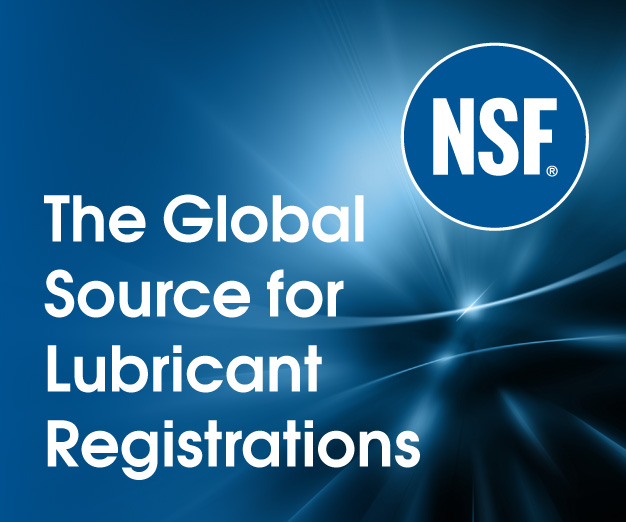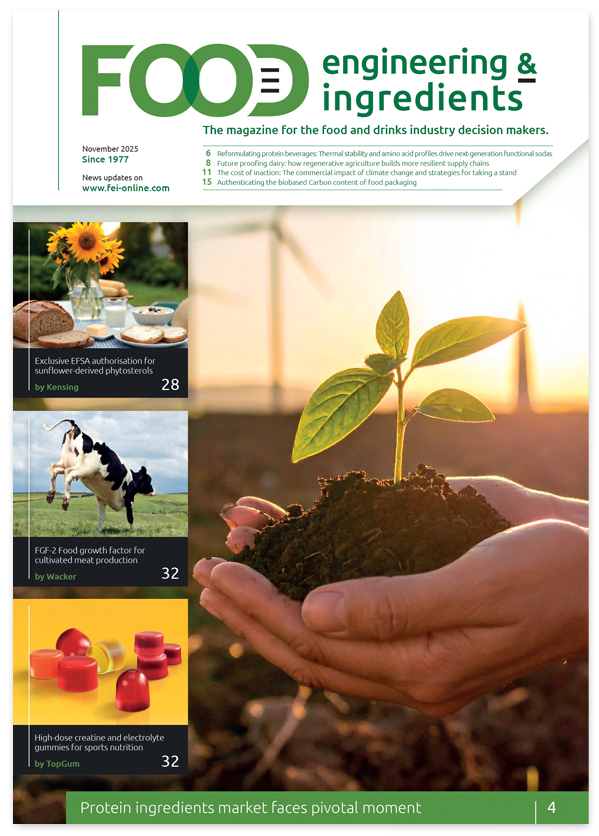Determination of MCPD and glycidyl esters in foodstuff
By the CHRONECT Workstation MCPD
3-Monochloropropane-1,2-diol (3-MCPD), 2-monochloropropane- 1,3-diol (2-MCPD) and glycidol are known as contaminants in foodstuffs due to manufacturing. MCPD fatty acids may occur during the refinement process of oils and fats at high temperature or in the presence of chloride containing salts.
However, refinement is an essential chemical and physical process. Only through this kind of treatment with high temperature undesired odorants and flavouring substances as well as possible traces of toxic compounds (pesticides, heavy metals or mycotoxins) are eliminated. There is an increasing importance of the analysis of these contaminants due to their carcinogenicity.
Animal experiments revealed, that increased uptake of free 3-MCPD is increasing the risk of cancer. In March 2016 the European Food Safety Authority (EFSA) declared a reduced value for the tolerable daily uptake of 0.8 μg/kg body weight.
Nowadays, there are numerous methods for the determination of MCPD esters. They can be divided into two groups: the direct determination using LC-MS/MS or the indirect analytics by GC-MS.
The direct analysis is more time-consuming because every single ester must be determined by LC/MS. The indirect method is more frequently used for routine applications. But still, manual determination is linked to a high expenditure of time.
Axel Semrau® therefore has automated and optimized the current methods.
Automated Methods
Axel Semrau® recommends AOCS Cd 29c-13 or DGF C-VI 18(10) as the most efficient method and thus, has chosen it as basis for the automation. Therefore, an automation of the entire sample preparation as shown in figure 2, is performed entirely within the autosampler.
At the same time, an evaporation step was left out, which does not result in higher measuring accuracy.
An additional step has been integrated with the inhouse developed Clean-Technology. The method “DGF Fast and Clean” has been developed. The application is suitable for determination of 3-MCPD, 2-MCPD and glycidol contents. In the process, the analytes which are bound to fatty acid esters are first converted into their free forms. Release from fatty acid esters is realized by transesterification. According to the DGF method two parts are required for the determination of the amount of glycidol. The transesterification in part A is quenched by adding sodium chloride. Here, MCPD fatty acid esters and glycidyl ester are both converted into free MCPD. Part B is quenched through addition of a chloride free saline solution (sodium bromide). In this case, only MCPD fatty acid esters are converted into free MCPD.
In further steps, free MCPD is extracted and then derivatized. Subsequently, a cleaning step developed by Axel Semrau® and is performed which protects the GC-MS and allows for longer maintenance intervals. Finally, GC-MS/MS analysis is conducted.
The difference between the two parts is then multiplied by an experimentally determined transformation coefficient (t). The result is the amount of glycidol in the foodstuff sample.
The setup of “DGF Fast and Clean” is represented schematically in figure 3. For the automation of the sample preparation Axel Semrau® chooses a 160 cm PAL3 DHR by CTC Analytics. This autosampler offers enough space for all required modules and can easy be adapted to other methods or applications. The dilutor is equipped with three solvents (n-hexane, extracting agent and iso-octane).
The PAL3 autosampler has been mounted onto a GC MS MS. This allows the immediate injection of the sample after preparation. Alternatively, the installation is also possible with instruments of other manufacturers or based on pre-existent GC-MS devices.
To avoid condensation of the derivatization reagent phenylboronic acid on the analytical column or ion source of the triple quadrupole, the GC system is provided with a backflush. This contributes to an extended lifetime of the triple quadrupole after at least 200 injections and delivers robust data. The entire control of the system is conducted by the user-friendly software CHRONOS, making even complex procedures easy to handle. The CHRONECT solutions by Axel Semrau® are preinstalled in application laboratories and tested (Factory Acceptance Test). Then, the systems are delivered ready-to-use to the customer and tested at the customer’s lab one more time (Site Acceptance Test). Thus, the quickest possible continuation of the routine measurement is assured.
Due to CHRONECT Robotic, CHRONOS in combination with PAL3 autosamplers, individual operations can be performed closely interlaced. Applying the “DGF Fast and Clean” method, results are available after 45 minutes only, as shown in figure 4. Traditional methods require up to 18 h reaction time. Interlaced processes enable the measurement of 36 samples in 24 hours. As a consequence, the new system provides highest precision in combination with a significant time saving. The obtained result always complies with the conventional DGF method.
The modular PAL3 system allows for the automation of other methods and therefore is perfectly suited for the everyday lab routine.
For example, the 3-in-1 method by SGS (AOCS Cd 29b-13) may partially be automated. Still, due to the individual steps of the method, a short manual interaction is required. For the Unilever method (AOCS Cd 29a-13) a centrifuge can be added and integrated making this method as well automatable as the Zwagerman-Overman method. Equally, the earlier Weisshaar method has already been implemented.
Measuring parameters and results
A closer glance at the “DGF Fast and Clean”: The components 3-MCPD and 2-MPCD and corresponding deuterated variants were detected using the triple quadrupole technique. Thus, for each compound one ion was selected for qualification and one for quantification.
The respective collision energies for the fragmentation of the parent ions after the first quadrupole were determined experimentally.
Important parameters for the particular components of the GC-MS device are shown in table 1.
For validation of the application, DGF “classical” was validated first. Samples are prepared exactly according to the DGF guidelines and then are injected. For validation, rac-1,2-Bis-palmitoyl-3- chloropropanediol und rac-1,3-Distearoyl-2-chloropropanediol were used. Defined amounts of the two compounds were added to a native olive oil and subsequently prepared using the CHRONECT Robotic system.
Here, native olive oil is suitable as a blank value matrix as it is compressed at low temperatures and therefore should not contain any MCPD esters. Blank measurements confirmed the assumption with a blank value of ~ 0.02 mg/kg sample for 3-MCPD and 2-MCPD. The results of the validation experiments are shown in table 2. Both part A and B of the DGF method were validated. The measurements lead to a detection limit of 0.026 mg/kg sample with a limit of determination of 0.041 mg/kg sample for 3-MCPD. The same approach was performed for the method “DGF Fast and Clean”. Here, a reference oil (FAPAS) was analysed additionally. For further validation of the method the automated measurements are compared with those of reference samples. The reference oil’s 3-MCPD and 2-MCPD content is known from interlaboratory testing. The results of the comparison are presented in table 3.
Evaluation of the results
The validation of the methods was performed according to designated standards to determine recovery and reproducibility. For the recovery, values between 91 and 133 % were calculated using “DGF classical” (Table 2). Free MCPD revealed a reproducibility of ~ 94 %. Only the values of 2-MCPD were above 100 %. For 2-MCPD only values using sample B were considered, because only free 2-MCPD is measured here.
For the method “DGF Fast and Clean” recoveries of 91 to 116 % were observed. Here, the values for 2-MCPD are above 100 % as well.
The method “DGF classical” (93 – 96 %) reveals a slightly higher reproducibility than the method “DGF Fast and Clean” with 87– 92 %.
The application of both methods as a routine operation will improve the reproducibility values in comparison to values from manual sample preparation significantly. The validation from this study is accordingly to measurements on four consecutive days.
Regarding the range of the values for 3-MCPD from the interlaboratory testing with the reference oil (3-MCPD 0.352 – 0.821 mg/kg), it becomes evident that there have to be significant deviations between the laboratories when determining 3-MCPD (+/- 40 %). It has to be considered that these values from interlaboratory testing were obtained applying different methods (DGF, Unilever, SGS). Here, an automation would definitely lead to smaller deviations.
Example chromatograms
The chromatogram shown in figure 5 demonstrates that even for low concentrations a high sensitivity and a non-interfered peak are given. The example shows 0.05 mg/kg 3-MCPD contained in olive oil. The chromatograms in figure 6 demonstrate an excellent reproducibility of the automated measurements of 2- and 3-MCPD in different concentrations.
Summary
The automation of the analytics of foodstuff on their 2-MCPD, 3-MCPD and glycidol content proved to be a helpful application, especially with the upcoming demand for it. Due to high carcinogenicity the analytical procedures for these compounds requires an automation which helps improving the sample throughput and reproducibility. The process presented here, “DGF Fast and Clean”, allows the entire analysis of a sample in a short period of time: 45 minutes for a sample with part A and B. Axel Semrau® therefore recommends the, “DGF Fast and Clean” as the most efficient method.
Due to the modular PAL3 system by CTC Analytics other methods can be as well automated, partially or entirely. Examples are the SGS 3-in-1 method (AOCS Cd 29b-13), the Unilever method (AOCS Cd 29a-13), the Zwagerman-Overman method or the Weisshaar method. CHRONECT Robotic, here equipped with the Dual Head Technology and CHRONOS, allows for a parallel performance of single operations. As a result, the system may be run in continuous use and measurements are performed fast.
The “DGF Fast and Clean” Technology developed by Axel Semrau® leads to excellent robustness of the system. The GC-MS is protected and maintenance intervals are prolonged. Hence, the fully automated application is perfectly suitable for routine operation analytics, as a delivery control or in the field of online analytics. The same applies to the analytics of 2- and 3-MCPD as well as glycidol.
This application note was contributed by JSB. The editorial content is from Axel Semrau. For more information, visit: www.go-jsb.com



